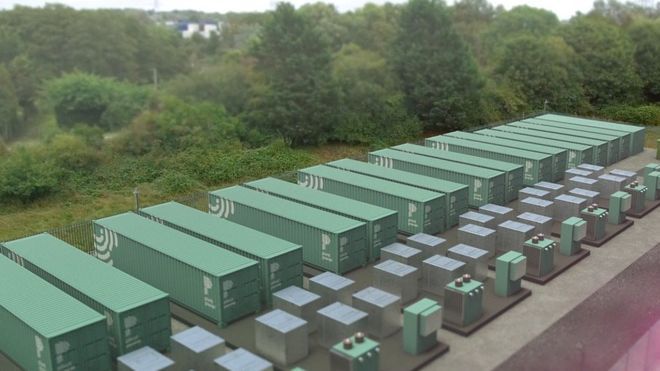Integrating battery energy storage solutions alongside electric vehicle (EV) charging hubs can pose a multitude of benefits to charging operators, while also unlocking benefits for fleet owners.
This week’s Everything EV Summit, hosted by Current± publisher Solar Media, heard how deploying energy storage solutions alongside EV charging facilities helped drastically reduce the lead time compared to local grid upgrades that may have been necessary to facilitate those installs, opened up EV charging hubs to fleets that deemed them critical to operations and posed other business benefits, which could drastically reduce the payback periods of overall infrastructure upgrades.
Speaking on a panel discussion, Simon Patterson of Multi Source Power, a UK-based energy storage system developer and integrator, said battery storage systems posed a big difference in the lead times compared to grid or network upgrades necessary for some EV charging installations – which essentially act as sources of intermittent power demand – to come forward.
Patterson gave one particular example of an ongoing project, which has a 140kW grid connection where his company will be deploying around 1.3MW of EV chargers. In comparison, the local Distribution Network Operator (DNO) had said that grid-level upgrades needed to allow the project to proceed would have taken 26 months, leading to grid upgrade deferral being a significant driver for his business. “That’s the different, we can deploy right now,” he said.
Richard Batty, key account manager for inverter supplier SMA, reaffirmed Patterson’s comments by noting that while grid upgrades, be they cables or transformers, can be expensive, “the cost isn’t necessarily the issue – it’s time”.
“DNOs are busy already, and are probably not able to do the upgrade in the time you need it,” Batty said, further adding that onsite energy storage systems that can provide power to EV charging hubs are ideally suited to “deal with the peaks and trim the edges” of power demand, further reducing the demand-side need of EV charging bays.
Nir Zohar, chief customer officer at battery supplier Chakratec, added that grid upgrades were often more costly towards the grid edge and in rural areas – locations which have also been identified as having reduced penetration for EV chargers and, as a result, EVs. With upgrades costing more, battery energy storage could lower the hurdles for transport electrification in such area.
Ian Featherstone, account manager for supply chain at Energy Saving Trust, noted that grid upgrades had emerged as a “big challenge” for EV charging infrastructure deployment and required the industry to essentially start from the vehicle first, understanding what they are in terms of their energy consumption, idle times and the downtime required to charge. Once this is modelled and understood, you can reduce the cost of grid upgrades by better managing the system load.
Featherstone added that the integration of battery energy storage with rapid chargers, alongside minimal grid upgrades is “really almost the way most sites will have to operate”, especially for commercial fleet operators. He added that particular sectors impacted by this were daily or short-term car rental operators, which had minimal car parking space but demands to keep vehicles available at short notice. Likewise, some ‘blue light operations’ – mostly emergency operations – would also require similarly quick turnarounds for response times.
A further feather in a battery energy storage systems’ (BESS) cap, according to Patterson, is its inherent mobility over more permanent grids and wires upgrades. With leases for premises often short-term and businesses moving for a multitude of reasons, a BESS which can enable EV charging becomes “in essence a moveable asset”, he said, commenting that grid upgrades cannot be moved as such.
The Everything EV Summit, hosted by Solar Media, continues throughout next week. More details on the event, including how to attend, can be found here.






